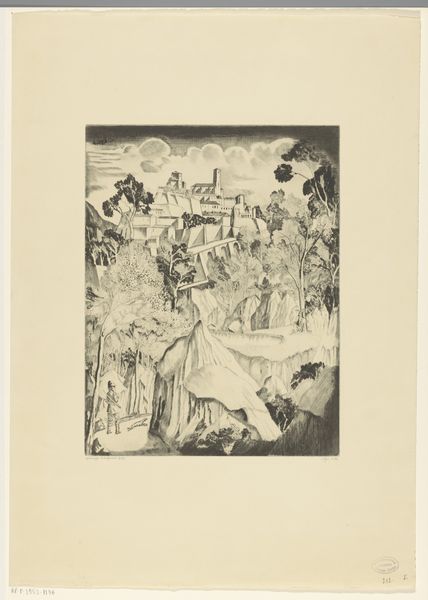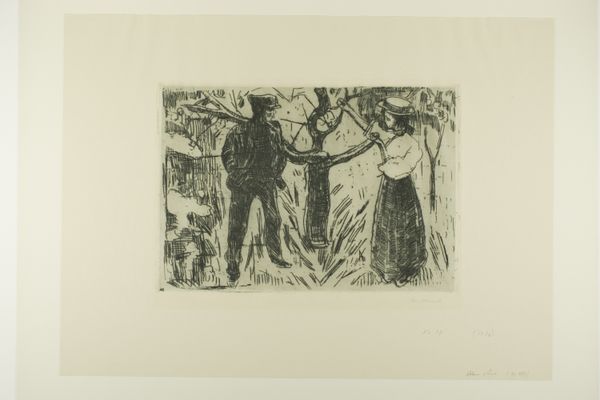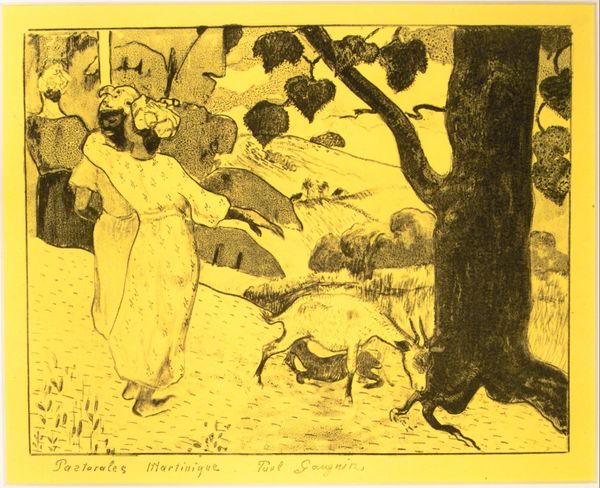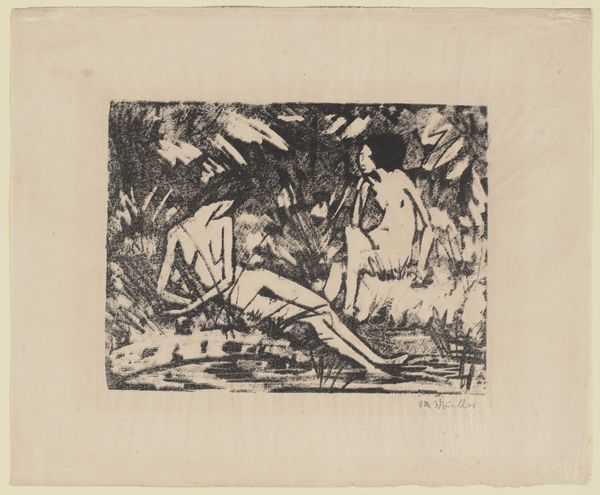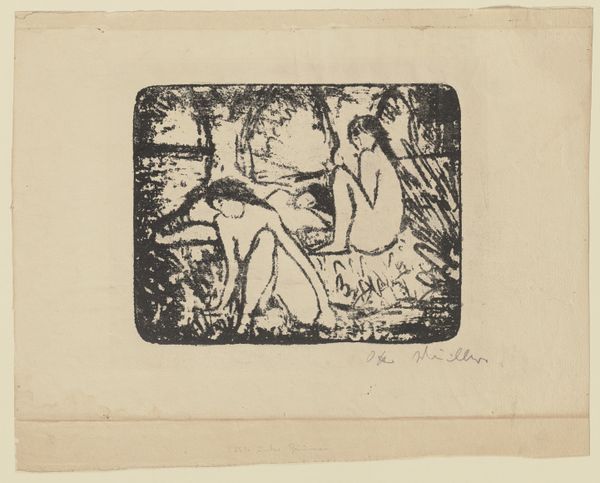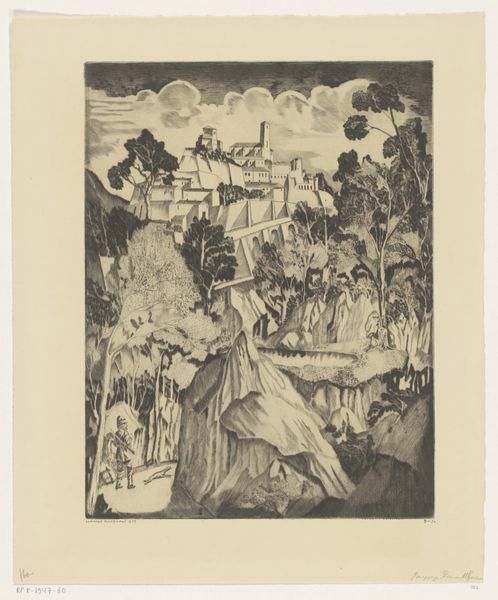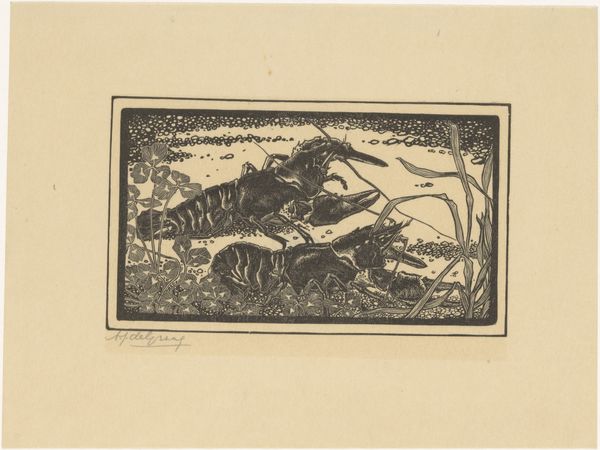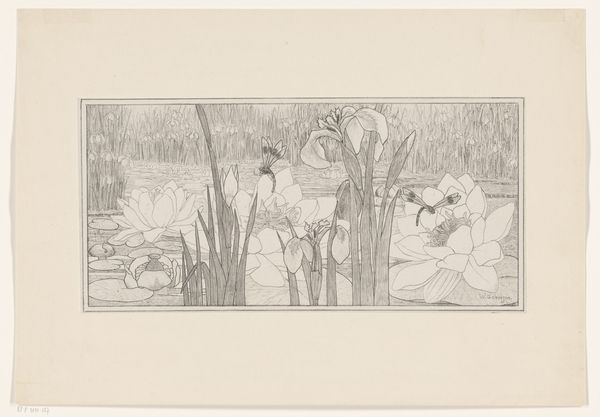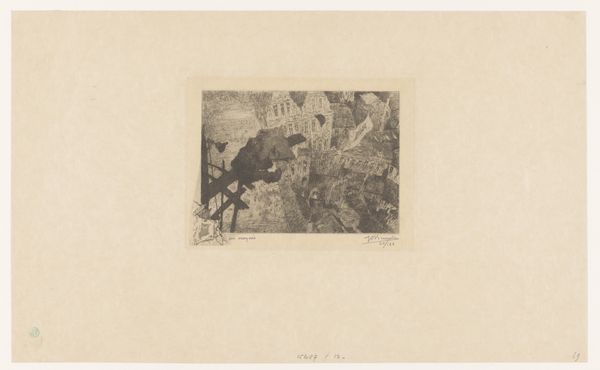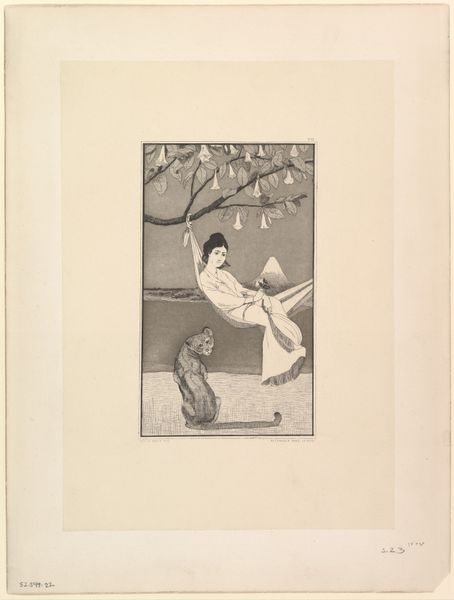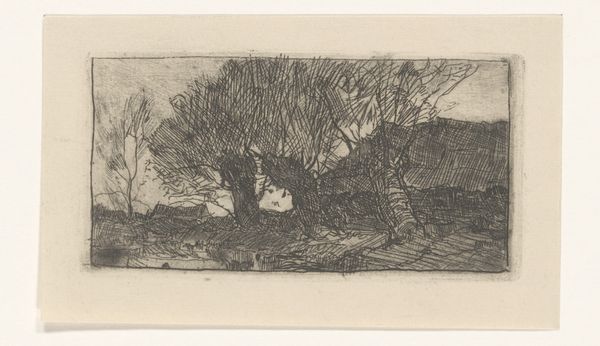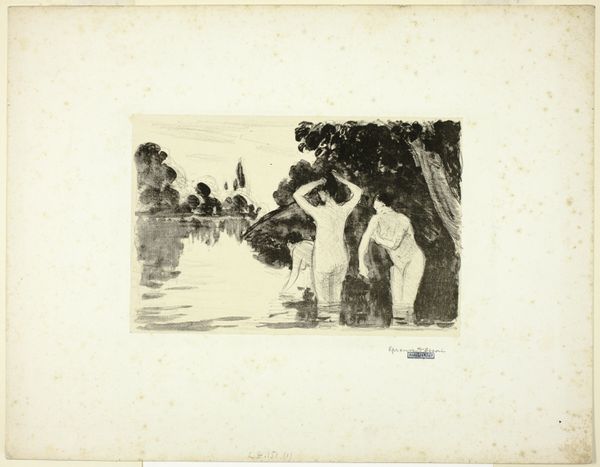
print, paper, ink, woodcut
# print
#
impressionism
#
landscape
#
figuration
#
paper
#
ink
#
woodcut
Dimensions: 7 x 8 3/4 in. (17.78 x 22.23 cm) (image)11 1/2 x 17 3/4 in. (29.21 x 45.09 cm) (sheet)
Copyright: Public Domain
Curator: Looking at Gauguin's "Pastoral in Martinique," created in 1889, what strikes you first? This work is an ink on paper woodcut, residing here at the Minneapolis Institute of Art. Editor: It's the heavy contrast, definitely. The stark blacks against the paper create a moodiness that feels almost… oppressive, despite the pastoral subject matter. It looks almost claustrophobic despite the landscape. Curator: It is interesting you say oppressive because, historically, the pastoral genre is used to portray nature as a kind and safe haven for respite. Now, consider the social dynamics in Martinique during Gauguin’s time. Do you think that impacts the overall impression? Editor: Absolutely. Knowing the history, I can't ignore the colonial context. The depiction of Martinique as a 'pastoral' scene, divorced from the realities of plantation labor and French colonial rule, feels…complicated. Gauguin benefits from that exploitative system. What's his relationship to the process of woodcut printing and paper production itself, too? Were these materials locally sourced? Curator: I appreciate you steering us to materiality! While researching the context surrounding the origin of the paper and ink and printing facilities may offer unique insights to Gauguin’s processes, we can appreciate Gauguin experimenting with form. Note how the woodcut technique gives it this raw, almost primitive quality. Editor: Raw is one way to put it. To me it speaks more to an incomplete depiction of culture and land, perhaps inadvertently revealing the disruption colonization inevitably causes, even within art production itself. The landscape is, literally, cut apart. Curator: An intriguing take! What do you make of Gauguin’s portrayal of labor in other artworks during this era compared to this one? Does the absence, or near absence, in this woodcut change the narrative? Editor: Absolutely. That absence is loaded, isn't it? By idealizing the landscape without portraying the realities of labor, Gauguin actively participates in constructing a particular image of Martinique for European consumption. Curator: A vital point to consider when viewing this work. I walk away more critical and acutely aware of the historical narrative the work invokes, especially due to the way it was physically produced. Editor: And I'm left questioning who gets to define the "pastoral" and at whose expense. Art really does reveal a lot about the culture from which it originates, doesn't it?
Comments
No comments
Be the first to comment and join the conversation on the ultimate creative platform.
